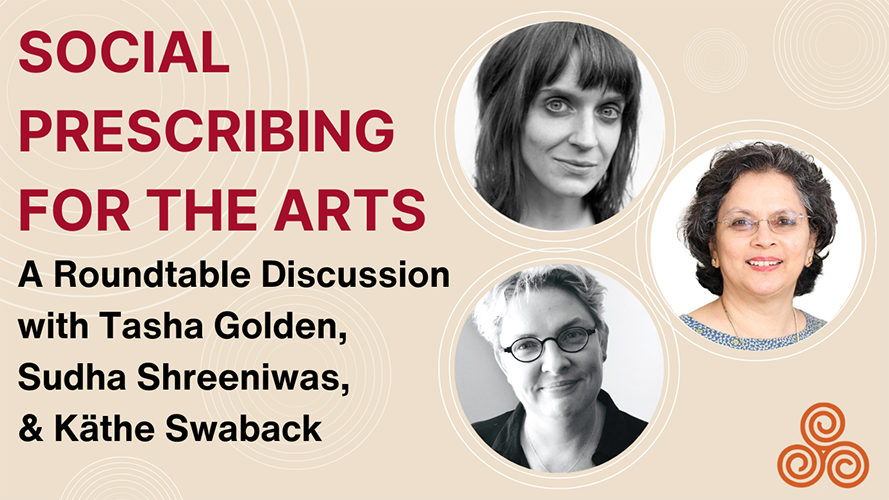From the University of Florida’s Center for Arts in Medicine Website:
The Creating Healthy Communities through Cross-sector Collaboration white paper presents the views of more than 250 thought leaders from the public health, arts and culture, and community development sectors who were convened in working groups in 2018 and 2019. Their voices are joined by over 500 participants in a national field survey and focus groups, and are supported by findings of a scoping review of arts + public health literature.
With the public health sector as a primary intended audience, the Creating Healthy Communities through Cross-sector Collaboration white paper frames the value of the arts and culture for advancing health and well-being in communities. It offers examples and recommendations for expanding cross-sector collaboration and innovation, with the following goals:
- Advance collaboration among those working at the intersections of art and culture, public health, and community development
- Stimulate upstream interventions—aimed at systems, cultures, and policies—that reduce barriers to health and well-being
- Assert the value of arts and culture for increasing health, wellbeing, and equity in communities
- Foster transformative social change that advances health and wellbeing
This paper is also intended to offer value and guidance to community development, arts and culture, and other allied health sectors by providing examples of impactful cross-sector collaborations that engage arts and culture to address five critical public health issues: collective trauma, racism, social isolation and exclusion, mental health, and chronic disease. These concrete examples inform the paper’s recommendations and call to action, which assert the value of the arts and culture for community health transformation, and for advancing the culture of health being envisioned today.
Arts on Prescription: A Field Guide for US Communities offers a roadmap for communities to develop programs that formally integrate arts, culture, and nature resources into local health and social care systems. Arts on prescription programs allow healthcare providers and social service agencies to “prescribe” arts activities, cultural experiences, and time in nature to support their patients’ or clients’ health, wellbeing and quality of life.
Listen to Tasha Golden and Jill Sonke discuss the field guide in-depth during the University of Florida Center for Arts in Medicine webinar.
This article was published on CourseStorm, a platform which provides accessible, online education registration and management support for organizations that offer classes and programs to the public — many of which focus on arts education. Featured in the article is Heather Ikemire, Lifetime Arts’ Executive Director, who shares why now is the time for organizations and educators in the arts field to engage older adult learners and the myriad benefits of offering creative aging programming in their communities. Heather also shares examples of successful programming across the country and free resources which we have developed for organizations to utilize when getting started in this work.
In this issue, we explore the emerging research and practices of social prescribing for the arts (SPA) and discuss the future of SPA efforts as a vital component of arts and health services in the U.S., especially for older adults. This issue starts framing answers to key questions related to the challenges and opportunities this practice surfaces in healthcare and creative aging. Featured in this issue is a recorded conversation between three leading experts on SPA in the U.S.: Tasha Golden, S. Sudha, and Käthe Swaback.
*This email is an abridged version of our our full issue, which contains in-depth analysis and numerous resources on social prescribing. You can read the full issue here.


